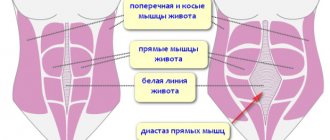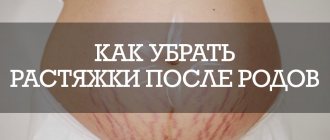1259
0
In this article:
- What determines the condition of the perineum
- Vulva color change
- Hematomas
- Unusual smell
- Breaks
- Vaginal dryness
- Vaginal stretching
After natural childbirth, every woman's perineum changes to one degree or another. Gradually, these changes pass, and the female body returns to its normal state. However, if this is your first birth, the condition of the perineum may terrify you.
It is important to distinguish in time between natural changes and serious problems localized in the perineal area. If changes in the female organs are not dangerous, but cause discomfort, you need to learn to cope with them.
What determines the condition of the perineum
How the perineum will look after childbirth depends on many factors:
- duration of labor;
- the presence of chronic infectious processes in the pelvis;
- woman's age;
- degree of elasticity of perineal tissue;
- baby's head size.
Let us examine in more detail what changes in the appearance of the perineum a woman may encounter after natural childbirth.
Vulva color change
During pregnancy, under the influence of hormonal changes, so-called hyperpigmentation occurs. At this time, the skin in the area of the labia and anus may darken significantly. Also, under the influence of hormones, nipples darken, and pigment spots may even appear on the face and body.
There is no need to be alarmed when dark skin is discovered on the perineum after childbirth. Gradually, as the balance of hormones returns to normal, this pigmentation will disappear.
How to reduce the risk of rupture?
There are ways you can reduce the risk of ruptures.
Readiness for childbirth
During pregnancy, it is important that the expectant mother undergoes preparation for childbirth: this can be literature, courses, you can look at photos of breathing rules, advice from mothers who have given birth, etc. After such information, the woman begins to be less afraid, since she can control the situation.
If you have attended courses for expectant mothers, the woman during childbirth will be ready for contractions and pushing, and will choose the optimal position and breathing rhythm for herself. This attitude will make childbirth more natural, which will reduce the risk of surgery.
Massage
To improve the elasticity of the perineal tissue during childbirth, you need to go for a massage or do it yourself, at least 2 times a week. The course should begin in the last month of pregnancy. The massage is carried out in the evening after taking a shower; it is important to maintain hygiene so as not to cause an infection. You can use oil during the procedure. You cannot use oils with fragrances, because... they can cause allergies.
Massage technique: insert your fingers shallowly into the vagina and massage with light pressing movements towards the anus, this is the area most often susceptible to ruptures. The procedure lasts no more than 5 minutes. If the woman is not embarrassed, her partner can perform the procedure.
Kegel exercises
Kegel exercises help improve tissue elasticity and strengthen the perineum, which will greatly facilitate the process during childbirth, and also help you recover faster after. The exercises involve contracting the muscles of the vagina and anus at different rates.
How many times should you do the exercises? For the first time, you can start with 10 contractions, performing 4 times a day, every day you need to increase the number of times.
The convenience of this technique is that it can be performed anywhere. Many people have problems doing it at first; it seems like they can’t do it, but daily training will improve the technique. The main thing is not to stop studying.
Hematomas
Hematoma is an accumulation of blood in soft tissues. During childbirth, the perineum is subjected to prolonged strong compression by the baby's head, especially if the fetus is large. In this case, significant hematomas may occur at the site of pressure, which outwardly look like bruises.
Normally, blood in hematomas resolves on its own within 1–2 weeks. If a lump appears at the site of the bruise, and when you press on it you feel significant pain, then you need to visit a gynecologist.
A hematoma can be complicated by infection if basic hygiene rules are not followed.
Unusual smell
In the first 6–8 weeks after birth, lochia may emerge from the uterine cavity. This postpartum discharge is of a sanguineous nature, it is mucous and may have a mild odor. Lochia is a sign of healing of the uterine cavity.
If suddenly the discharge from the genital tract begins to acquire a strong, unpleasant odor, you should immediately notify your doctor.
Bad-smelling discharge may also be accompanied by the following symptoms:
- change in color of discharge - up to yellow-green color;
- pain in the lower abdomen;
- increased urination;
- increase in body temperature.
All these signs are characteristic of the development of a genital tract infection, which is treated with antibiotics as prescribed by a doctor.
To eliminate the possibility of developing an infection in the postpartum period, you must follow all the doctor’s instructions: maintaining hygiene, lack of sexual activity in the first weeks after childbirth, wearing underwear made from natural materials, and timely replacement of pads.
How long do stitches take to heal?
Every young mother who has suffered various ruptures during childbirth wonders how long do the stitches hurt after childbirth? After all, she probably can’t wait to quickly lead her usual lifestyle and forget about the painful sensations.
How quickly the stitches heal depends on the following:
Whether self-absorbable sutures were used or not. If yes, then the healing time will be about two weeks. The scars will take a little longer to heal - about one month.
When can stitches be removed after childbirth if other materials were used? In this case, they must be removed a week after application.
The duration of wound healing will be up to one month. Everything, of course, depends on the individual characteristics of the female body.
How to lose weight on your own after childbirth: the main options for quick weight loss, the best exercises and methodsWhy does the stomach hurt after childbirth - the main causes of pain and what to do if the lower abdomen hurts (100 photos and video tips)
Causes and locations of spots after childbirth - why they occur, how they are diagnosed and when to see a doctor (95 photos)
How long does it take for stitches to dissolve after childbirth and wounds to heal? The healing period of wounds will also be influenced by hygiene, how carefully and carefully the woman treated the wounds.
The desire to quickly forget about pain and return to their previous lifestyle forces young mothers to follow all the recommendations given to them in the maternity hospital.
To further intimidate, some doctors may show women photos of stitches after childbirth so that they can see the consequences of not following the recommendations.
Breaks
Soft tissue ruptures often occur during childbirth. They can be of varying degrees, sizes and depths. It is important that qualified medical personnel attend the birth. After all, it is the midwife during childbirth, when she sees that the threat of rupture is extremely high, who makes an incision in the perineum - an episiotomy.
Why is this necessary? An even incision made with a sharp surgical instrument heals faster and with minimal risk of complications.
After the baby is born, the doctor carefully examines the genital tract. If there are tears or cuts, sutures are necessary. For this purpose, as a rule, natural absorbable suture materials are used.
The future appearance of the woman’s perineum depends on the care of the specialist and how correctly he compares all the tissues.
What can help avoid trauma during childbirth:
- correct behavior during contractions and pushing;
- the position of the woman in labor, when there is no strong pressure on the perineum (half-sitting);
- adequate assistance from medical personnel;
- mother's confidence during childbirth.
What to do if ruptures or incisions during childbirth could not be avoided? The most important thing is adequate hygiene of the genital tract. For the first couple of weeks, it is recommended to wash yourself after each trip to the toilet, and then blot your perineum with a soft towel. Avoid putting stress on the seam - do not sit on a hard surface, do not squat for a long time, avoid rubbing with linen.
Problems that may arise with a crotch seam:
- discomfort;
- redness of the tear area;
- compaction of surrounding tissues;
- increased body temperature;
- bleeding from the suture.
All this indicates the presence of problems and requires urgent medical attention. In some cases, treatment will involve removing the old threads and re-stitching.
Types of seams and breaks
Tears are divided into those that are inside the body and on the skin, and external. Accordingly, there will be external and internal seams after childbirth. The material of the threads will depend on the location of the wound.
Cervical rupture occurs due to a large fetus. Anesthesia is not used to close such a rupture, since during this period the cervix is insensitive.
For sutures, self-absorbable material is used - catgut, or caproag, vicryl.
The advantages of these materials include their flexibility. The woman does not feel them, they do not cause postoperative complications.
Vaginal rupture can occur during birth trauma. During suturing, lidocaine or novocaine is used for pain relief. Catgut is used as a suture material. No additional care is required for these seams.
Perineal ruptures occur naturally or if the gynecologist considers it necessary to make an incision during childbirth.
Such ruptures are divided into three degrees: the first - only the skin is cut, the second - a cut on the skin and muscle fibers, the third - the rupture reaches the wall of the rectum.
Lidocaine is used for local anesthesia. Catgut is used to close first degree tears. For second and third degree tears, silk or nylon threads are used.
The disadvantages of these sutures include painful wounds. Requires mandatory compliance with hygiene rules, as well as daily treatment with antiseptics.
The most problematic are the external seams on the perineum. Unfortunately, complications occur in this area in the form of wound infection, suppuration and inflammation.
How to get your figure back after childbirth - ways to quickly restore a beautiful figure and postpartum body care (130 photos)Temperature norms after childbirth - what should be the normal temperature for mother and newborn (90 photos and videos)
Causes of diastasis after childbirth and what it is: 115 photos of exercises, first signs and tips on how to identify the problem
That is why doctors, upon discharge from the maternity hospital, always instruct young mothers about the rules for treating sutures.
Vaginal dryness
After the doctor gives the go-ahead to resume sexual activity during a postpartum examination 6–8 weeks later, many women face the problem of vaginal dryness. This phenomenon occurs due to the same hormonal imbalance. The secretion of mucous lubricant from the genital tract occurs under the influence of the female sex hormone - estrogen. If there is little of it in the body, the vagina will be dry from the inside.
It is important to understand that this is a temporary change. As soon as the hormones return to pre-pregnancy norms, the vagina will again be moisturized naturally. Until this happens, it is recommended to use lubricating gels during sex after childbirth; you can buy them at a pharmacy or sex store.
Vaginal dryness can lead to discomfort during sex and even micro-tears in the mucous membrane. You should not endure discomfort; use lubricant.











